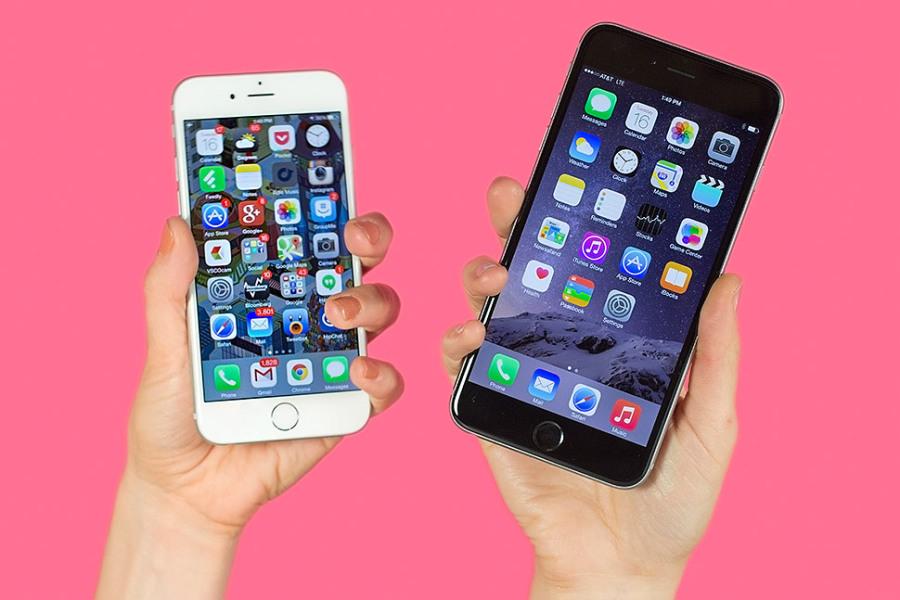Introducing the iPhone 6 and iPhone 6 Plus
Talk about long lines! In mid-September Apple released the highly-anticipated iPhone 6 and iPhone 6 plus. The Wednesday prior, they delivered the iOS 8 update to all iPhones. But is Apple’s “biggest release since the App Store” living up to its high expectations? We asked some of the students on campus what their thoughts were on the new release.
Class president Trevor Bohatch waited patiently for the iPhone 6 so he could finally upgrade from his previous iPhone 4s, stating that “it’s nice not to have to put the phone all the way up to your face to see what your doing,” which of course isn’t necessary with the larger 4.7 inch display.
Other than the aesthetics, like the 5S the iPhone 6 sports an 8 megapixel camera, only this one is improved by new light sensors and various iOS 8 improvements. The most popular of the new toys is the improved slow-motion video capturing, now recording at 240 fps in 720p, or 60 fps in 1080p. Additionally, the 6 plus features optical image stabilization. Kristina Cho, who upgraded from a Samsung Galaxy S3, explains that even though the camera’s megapixel count is the same, “the camera is better,” on the iPhone due to the exciting new features.
Possibly the most important aspect of the phone, the processor, also got upgraded. While the iPhone 5S featured an innovative 64-bit A7 processor with an M7 motion coprocessor, the iPhone 6 and 6 plus feature 64-bit A8 processors with M8 motion coprocessors.
It’s no secret — Apple strives to produce high-quality displays on their products. As usual, the iPhone 6 brings an upgrade from the previous models. With a slightly better 720p resolution for the iPhone 6 and a much more significant upgrade to 1920×1080 resolution for the iPhone 6 plus with a pixel density of 401 ppi, Apple provides an option for both practicality and quality.
New releases always have their cons, and the iPhone 6 and 6 Plus are no different. As is usual with big changes, not many are initially in favor of iOS 8. Sophomore Zach Cox claimed that iOS 8 had “destroyed [his] battery and took up a lot of space on his phone.”
Freshman Whitney Thundus, like many, had to delete apps and photos to make room for the new update. Along with the occasional bug, these issues will most likely be fixed or dealt with shortly.
One of those random bugs results from the new update’s inclusion of the ability to send voice recordings via the messaging system. This feature has already been proven beneficial by the various Android phones that have included it, but sophomore Tucker Moore has not had good luck with it. “I was texting this person and right after, I was talking badly about them and it sent the whole recording of everything I said.” That’s awkward.
On paper, the iPhone 6 doesn’t exactly shout “innovation” when compared to the 5S. The 6 performed better in that category, but neither are exactly innovative in the category of specifications and features when compared to the latest Android phones. The difference, however, is in the operating system, the optimization, and the quality.
According to Tristan DaVoulas, a senior and Android user, “iOS 8 somehow manages to take advantage of the hardware in a way that makes the phone perform equally to the current generation of Android phones.”
Though Apple’s newest products include several new features previously available in Android phones, they bring the classic Apple touch, and with that: the Apple popularity.












